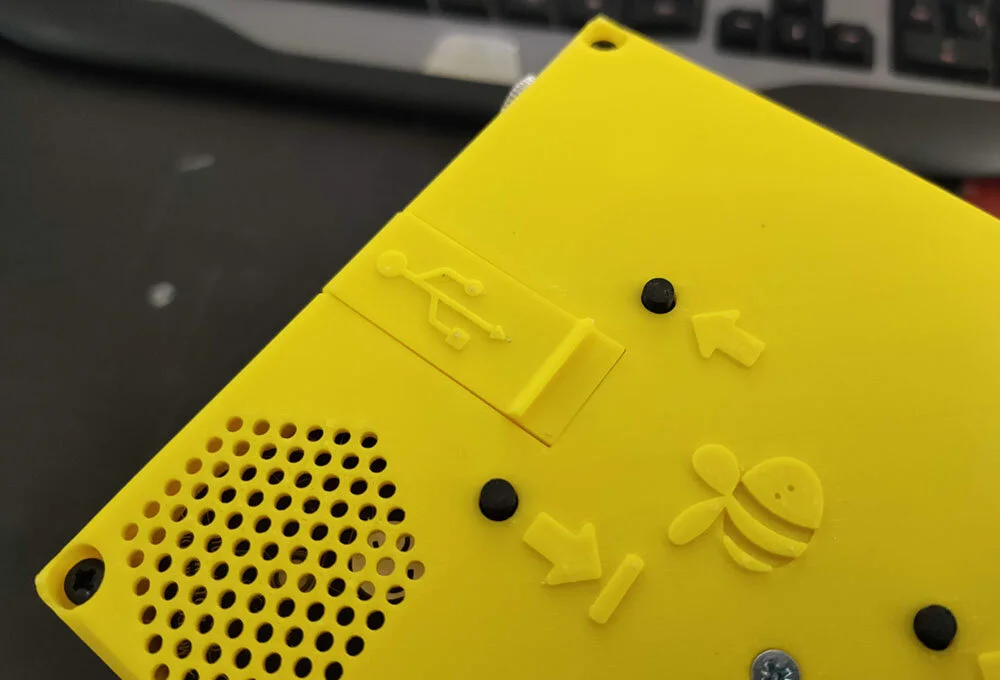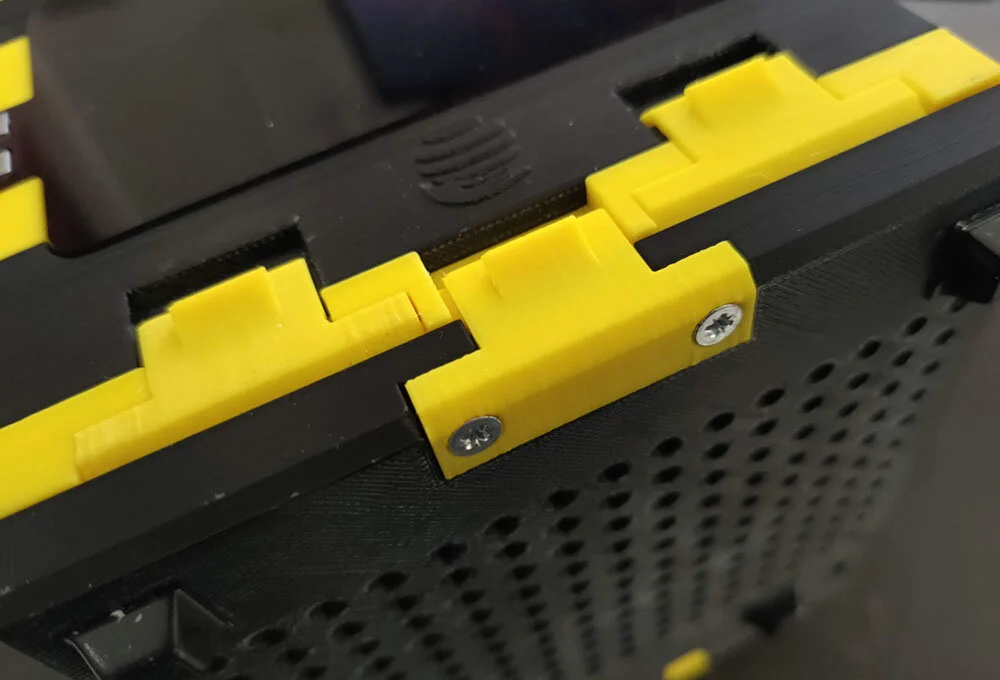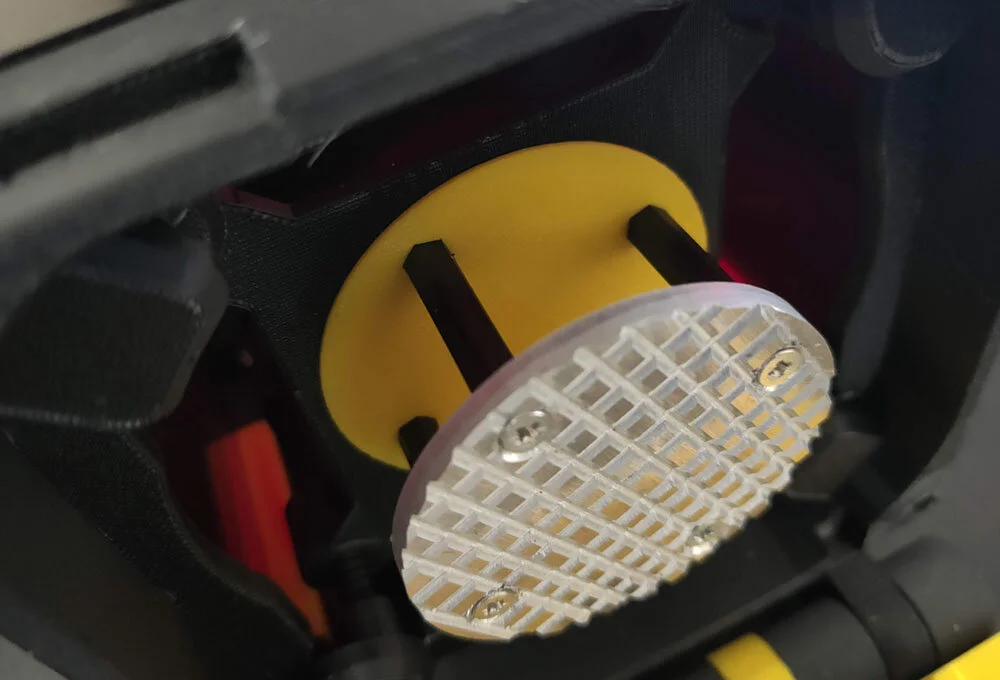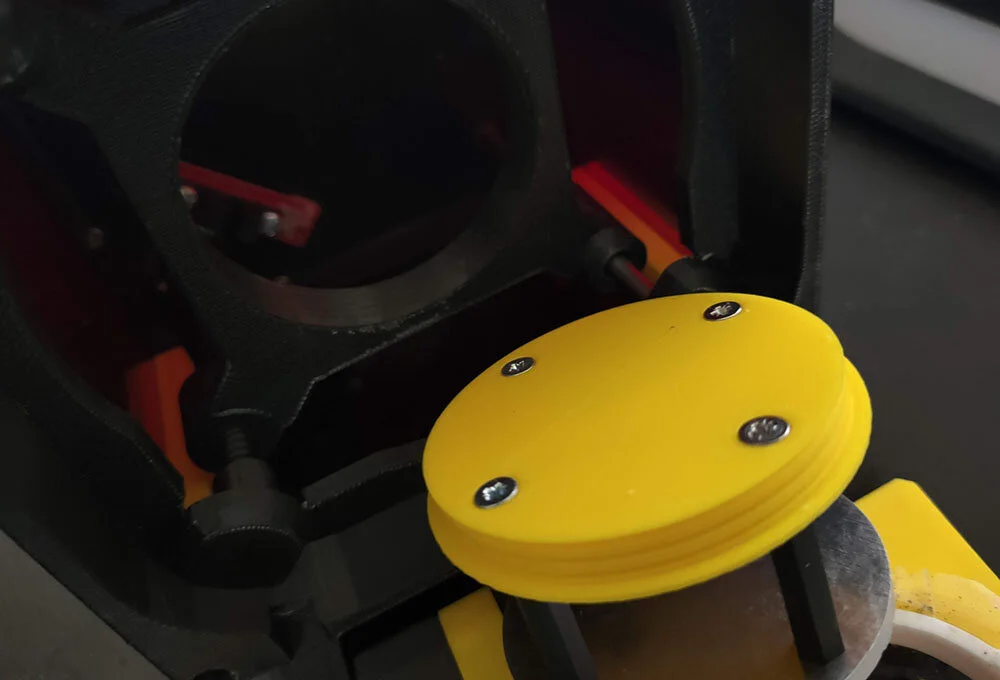The goal of the LumiBee project is to use the experience we gained in portable 3D printers and daylight resins, but with a much more affordable solution.
We realized that making a commercial product using smartphones as light source was not feasible, but beside the expertise in portable 3D printers, we spent a considerable amount of time designing and testing phone-based resin solution, so why keep all of it close in a drawer? Davide brought the LumiBee design to a refined working prototype and we decided to release everything as open source.
In the past years he continued to work on LumiBee at personal level. He developed all mechanical design, PCB design, firmware and mobile App. When coming to prototyping he had the idea of designing the whole resin 3D Printer parts to be 3d printable with a domestic FFF printer, so people could recreate the LumiBee at home at a very low cost.
Design and challenges
Particular attention has been paid to optimize the design and make all parts easy and fast to print with an FFF 3D printer: minimizing the overall printing time, and not exceeding the bed size of domestic machines. Some of LumiBee parts, like hinges or snap connectors, may break after some time, so they were designed as separate elements, that can be simply replaced without having to replace the whole structure.
To reduce the total cost, lead screws and lead screw nuts have been designed to be 3d printed, and even the coupler is integrated into the lead screw part! Acrylic windows have tiny magnets that will keep them in position and also make then easy to remove.
Another interesting feature of the design of the LumiBee is that only a part of the screen of the phone is used to cure the resin; a small part of the screen will “stick out” of the LumiBee and is used to show the progress of the printer, without the need of adding a display to the cost of the parts.








